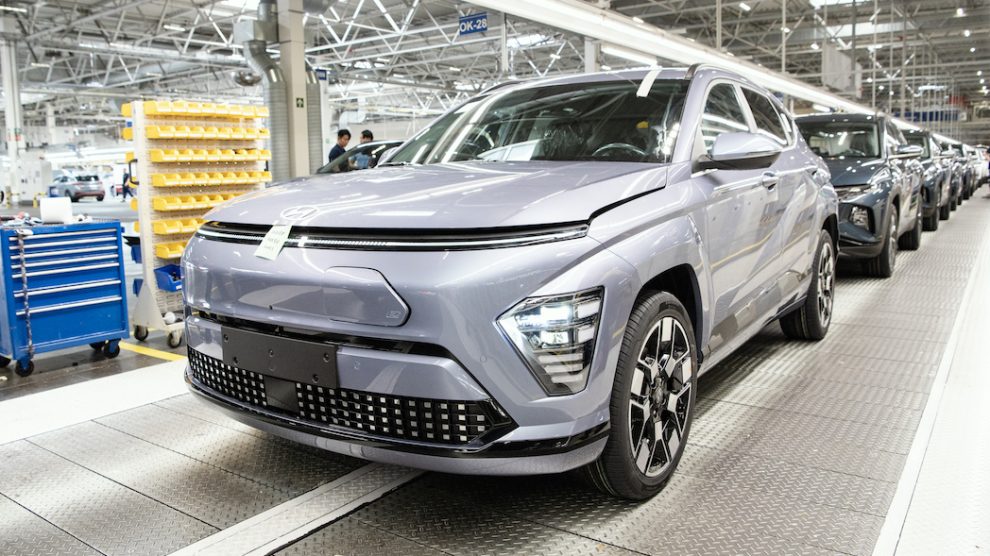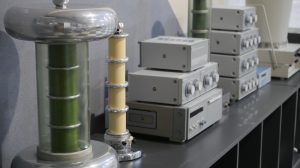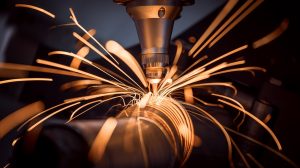The EU wants to phase out the new sale of fossil fuel automobiles by 2035 as part of its plan to minimise carbon emissions. Emerging Europe is set to play a major role manufacturing the EVs that will succeed them.
Korean giant Hyundai this week announced the start of production of its new Kona Electric at its plant in Czechia.
Over the next 12 months, Hyundai intends to manufacture more than 20,000 Kona Electric’s at the plant, in Nošovice in the east of the country close to Czechia’s border with Poland.
- Manufacturing, buying, and selling: CEE’s role in the BEV ecosystem
- Rimac commits long-term future to Croatia
- The Romanian start-up making home EV charging more accessible
The battery cells for the new model are manufactured at LG Energy Solution’s plant in Wrocław, Poland.
“Hyundai regards Europe as a core market,” says Michael Cole, president and CEO of Hyundai Motor Europe. “That is why we produce more than 70 per cent of our models—designed with European customers in mind—in Europe. In response to the growing demand for our electric vehicles in the region and with a focus on shortened delivery times, producing one of our most important electric cars in Europe underlines the importance of the European market for Hyundai.”
CEE: A prime location for EV production
Besides marking yet another major commitment by a Korean firm to Central and Eastern Europe, Hyundai’s announcement cements the region’s position as a key location for the production of electric vehicles.
Škoda, Czechia’s largest exporter, sold more than 53,000 electric vehicles in 2022, all made at its plant in Mladá Boleslav. Three new electric models are set to roll off the production line by 2026, with more to follow. Last year, the firm began making batteries for EVs and hybrids for all brands in the Volkswagen group, also at Mladá Boleslav.
By the end of April, it had produced more than half a million battery systems.
In December 2022, Mercedes-Benz announced it would invest 1.3 billion euros in building a new factory in Jawor, Poland. It will be the company’s first plant to exclusively manufacture electric vans. The company will also start producing electric engines in Romania, where it has invested around 550 million euros in a factory in Sebeș.
“The decision for Jawor, Poland, is another milestone on the road to electro-mobility. We are not only repositioning our products but also future-proofing the entire value chain: from procurement to production, to logistics and sales,” said Mathias Geisen, head of Mercedes‑Benz Vans.
Mercedes-Benz already manufactures combustion engines and batteries in Jawor.
Last summer, Volvo announced it would invest 1.2 billion euros in a new plant in Košice, Slovakia that will also only produce EVs. It will create 3,300 new jobs. In November last year, the Slovakian company InoBat signed a declaration of intent with the government of Serbia to open an EV battery plant in the country.
Ford meanwhile has chosen Craiova, Romania, as the location of an all-electric car factory, due to open next year, and Volkswagen’s all-electric SUV Porsche Cayenne will be wholly manufactured at its Bratislava plant in Slovakia.
Automotive powerhouse
The EU wants to phase out the new sale of fossil fuel automobiles by 2035 as part of its plan to minimise carbon emissions. Kraków last year became the first city in Central and Eastern Europe to announce a ban on older diesel and petrol cars, with Warsaw following suit a week later. Both bans take effect in the summer of 2024.
As the Hyundai, Mercedes, Volkswagen, Ford, and Volvo announcements of the past few months demonstrate, as diesel and petrol cars are phased out, emerging Europe is set to play a major role manufacturing the EVs that will succeed them.
The region is already an established hub for automotive manufacturing. Slovakia is the largest car producer per capita in the world. In 2021, the country of 5.4 million people produced over one million cars. From 2026, the Volvo plant in Košice could add another 250,000 cars. Germany’s famous auto industry makes up five per cent of its gross domestic product (GDP), but Slovakia’s automotive industry accounts for a whopping 13 per cent of its GDP. Cars make up a third of Slovakia’s exports.
Poland is another leading auto producer, manufacturing vehicles for Volkswagen, Opel, Fiat and Lancia. According to the US International Trade Administration, Poland’s automotive industry accounted for, “11.1 per cent the total value of the country’s production and is second only to the food industry”. In Romania meanwhile, more than 180,000 people work directly in the production of motor vehicles, making it the fourth largest workforce in the automotive industry in the EU.
Hungary’s auto sector employs around 170,000 people, and the automotive industry accounts for roughly one-third of Hungary’s industrial output and one-fifth of exports.
More can be done
The predominance of the auto industry in Central Europe means new investors can hire workers who are already knowledgeable about the manufacturing process. But in order to keep this advantage, the region will have to do even more to embrace EV production.
Most of the engines produced in Slovakia for example are still traditional combustion models. The electric motors used in EVs are simpler to build and require fewer parts and less work to assemble. Ultimately, this means fewer workers will be needed to maintain the same rate of auto production once a transition to EV manufacturing is complete.
Dacia—a Romanian auto manufacturer now owned by the French Groupe Renault—remains Romania’s largest company by revenue and its largest exporter. Its Jogger Hybrid 140 model, Dacia’s first hybrid propulsion vehicle, rolled off the production line at Mioveni, near Pitești, in January.
However, while its Dacia Spring is one of the least expensive EVs on the European market, in order to keep costs as low as possible, Dacia is manufacturing it in China rather than Romania.
At the other end of the scale, Rimac in Croatia makes one of the world’s fastest—and most expensive—electric cars.

Poland’s electric dreams
In Poland, which has long held dreams of producing its own electric vehicle, the much-touted Izera currently remains on the drafting table.
In November, ElectroMobility Poland (EMP), the state-led firm behind the car, signed a licence agreement with Chinese company Geely to supply the platform for the vehicle. In March it agreed a deal with Italian design firm Pininfarina.
Hit by delays ever since a prototype was first presented in 2020, production of the first Izera model was initially pushed back from 2023 to 2024, and more lately to 2025. The model, an SUV, is now slated to go on sale by mid-2026.
Last week however it was revealed that EMP does not yet own the proposed site of the Izera plant, at Jaworzno near Katowice, which will be put up for tender at the end of September. “If we are unable to acquire the site, we have alternative locations,” EMP said in a statement.
Failure to acquire the Jaworzno site would likely push the Izera’s schedule back even further.
Photo: Hyundai
Unlike many news and information platforms, Emerging Europe is free to read, and always will be. There is no paywall here. We are independent, not affiliated with nor representing any political party or business organisation. We want the very best for emerging Europe, nothing more, nothing less. Your support will help us continue to spread the word about this amazing region.
You can contribute here. Thank you.







Add Comment